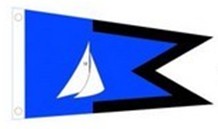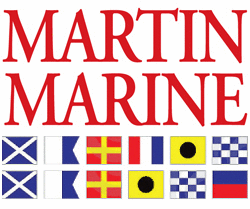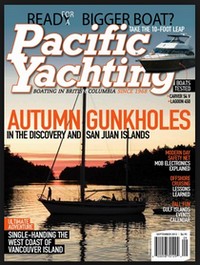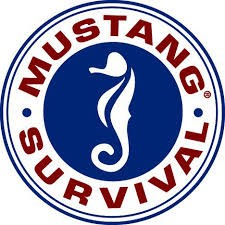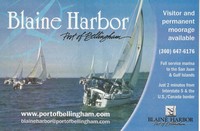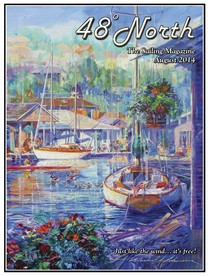MYCBC – Why Join Us › Forums › General Discussion › Boat passage discussion
- This topic has 7 replies, 4 voices, and was last updated 2 years, 5 months ago by
 Rick & Sue.
Rick & Sue.
-
AuthorPosts
-
June 14, 2023 at 6:02 pm #12229
Images from current atlas
Attachments:
You must be logged in to view attached files.June 14, 2023 at 6:04 pm #12232Feel free to add to the conversation
Attachments:
You must be logged in to view attached files.June 15, 2023 at 7:24 am #12234Anonymous
Thank you Alan for you help in input. The difference between high slack and actual slack for this area (boat passage) is definitely an interesting thing to consider and learn about. I was under the impression that approaching any pass at high or low slack would automatically put the boat at best crossing conditions, but this shows that is not always the case.
I have seen previous comments on this boat passage on the Facebook group and saw the advise to transit boat passage at High Slack, but this seems to not really be the best time to transit. However the other thing i noticed is that even though the transit through the boat passage appears to be the best at 17:16pm and not high slack, the current is much stronger after one is through the other side (based on the Atlas Pictures as compared to the slack condition at 20:00)
It would be interesting to actually be there and observe both of these times and film the conditions of the seas at boat passage and then compare them to this info.June 16, 2023 at 3:27 pm #12236Here is an unofficial source for current information. http://www.dairiki.org/tides/daily.php/boa/2023-07-02
The difference between high slack and low slack and the reason that it is suggested that you transit at high slack is the width of the channel. At low slack there is less width and easier to find the rocks.You will also find information for both Georgeson Passage and Boat Passage on page 126 of the Canadian Tide and Current Tables. Time adjustments in reference to Active Pass are shown there. Remember that all times in the government publications are standard time, not daylight savings time, so you need to make the adjustment for that as well. Information on how to calculate the currents at secondary stations is on page 115. https://waves-vagues.dfo-mpo.gc.ca/library-bibliotheque/chs-shc-tct-tmc-vol5-202301-41085140.pdf
We have transited Georgeson Passage several times and never had an issue other than one time going outbound in Georgia Strait we were met by sizable standing waves. A little lumpy for a couple of minutes but we got through it.
If you are coming from Blaine to Saturna and you don’t have Nexus for all on board, you would need to clear Customs at White Rock Pier or Poets Cove on Pender. https://www.cbsa-asfc.gc.ca/do-rb/services/trsm-sdtm-eng.html
If you all have Nexus, then you have more choices. Cabbage Island would an option but then you might as well go around the south end of Saturna. Horton Bay is another option, it is on Mayne Island just after you go through Georgeson Passage. We have cleared there before, it was a little confusing as there was no space on the dock, so we just floated around close to the dock for 15 minutes, then left when no one showed up. From Gemini’s experience clearing in White Rock a few weeks ago, I’m not sure how easy that is any more. https://www.cbsa-asfc.gc.ca/do-rb/services/nexusmarine-nexusmaritime-eng.html
-
This reply was modified 2 years, 6 months ago by
 Ron Gillies.
Ron Gillies.
-
This reply was modified 2 years, 6 months ago by
 Ron Gillies.
Ron Gillies.
-
This reply was modified 2 years, 6 months ago by
 Ron Gillies.
Ron Gillies.
June 17, 2023 at 1:10 pm #12249This was a difficult concept for me also. The key thing is the terminology that is used for 2 very different things. The terms high and low refer to tides which is the vertical measure of the surface moving up and down as a result of the moon’s gravity. Currents on the other hand are a horizontal movement of the water. There really isn’t such a thing as “high slack”. Think of it as “slack when the water is highest or lowest”. It might seem logical that the water would flow horizontally (current) until the vertical maximum or minimum are reached (tides). If you were filling a pool that would work. The water flows in the pipe until the level is full. In the real world the pool you are measuring your tide in has many entrances (pipes) flowing in and out at the same time so you cannot assume the time of maximum flow is the same as the time of maximum height. The rules are if you are looking to anchor or are worried about depth consult the TIDE TABLES but if you are worried about current flow you need to consult the CURRENT TABLES.
They are related but definitely not the same thing.June 20, 2023 at 3:24 pm #12252Anonymous
Thank you Ron & Rick,
i have made a sail plan and took into account all the pertinent information from the literature listed above. Based on the information i gathered i need to be at Georgeson Pass at 15:21pm for slack current on 6/30.
In order to be able to do this i would have to launch and be under way no later than 1130am if leaving Crescent Beach. It all looked good until i found out that Crescent Beach Launch is closed until tide is 6′ minimum. Which on 6/30 looks to be at 13:00. The problem with this is that now i won’t reach my 15:21pm slack window at Georgeson Pass in time.Any advice on how i could possibly pull this off so i could reach georgeson pass by 15:21 on 6/30? maybe different launch that i’m not aware of?
thanks.
June 20, 2023 at 4:44 pm #12253You should plan to attend the Commodores Cruise Zoom Planning meeting Wednesday June 21 at 7 pm. Meeting link will be emailed to you tomorrow. All your questions will be answered.
-
This reply was modified 2 years, 6 months ago by
-
AuthorPosts
- You must be logged in to reply to this topic.

